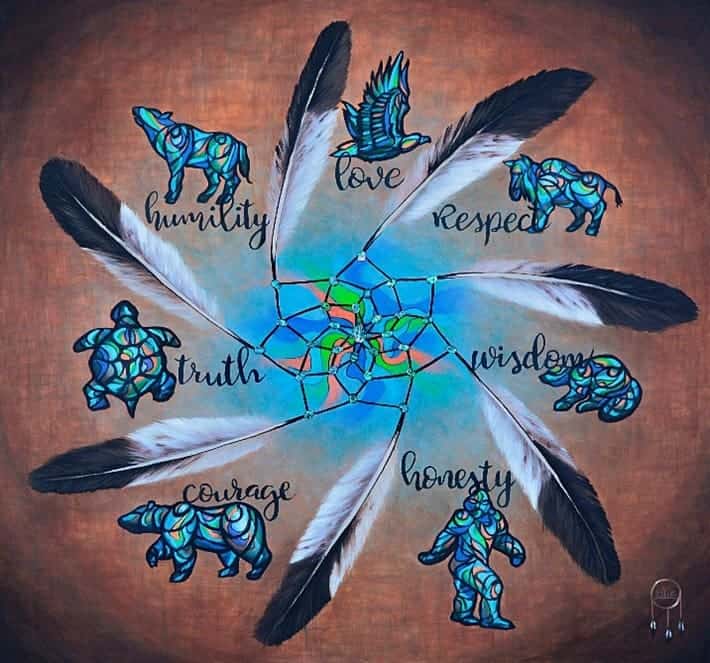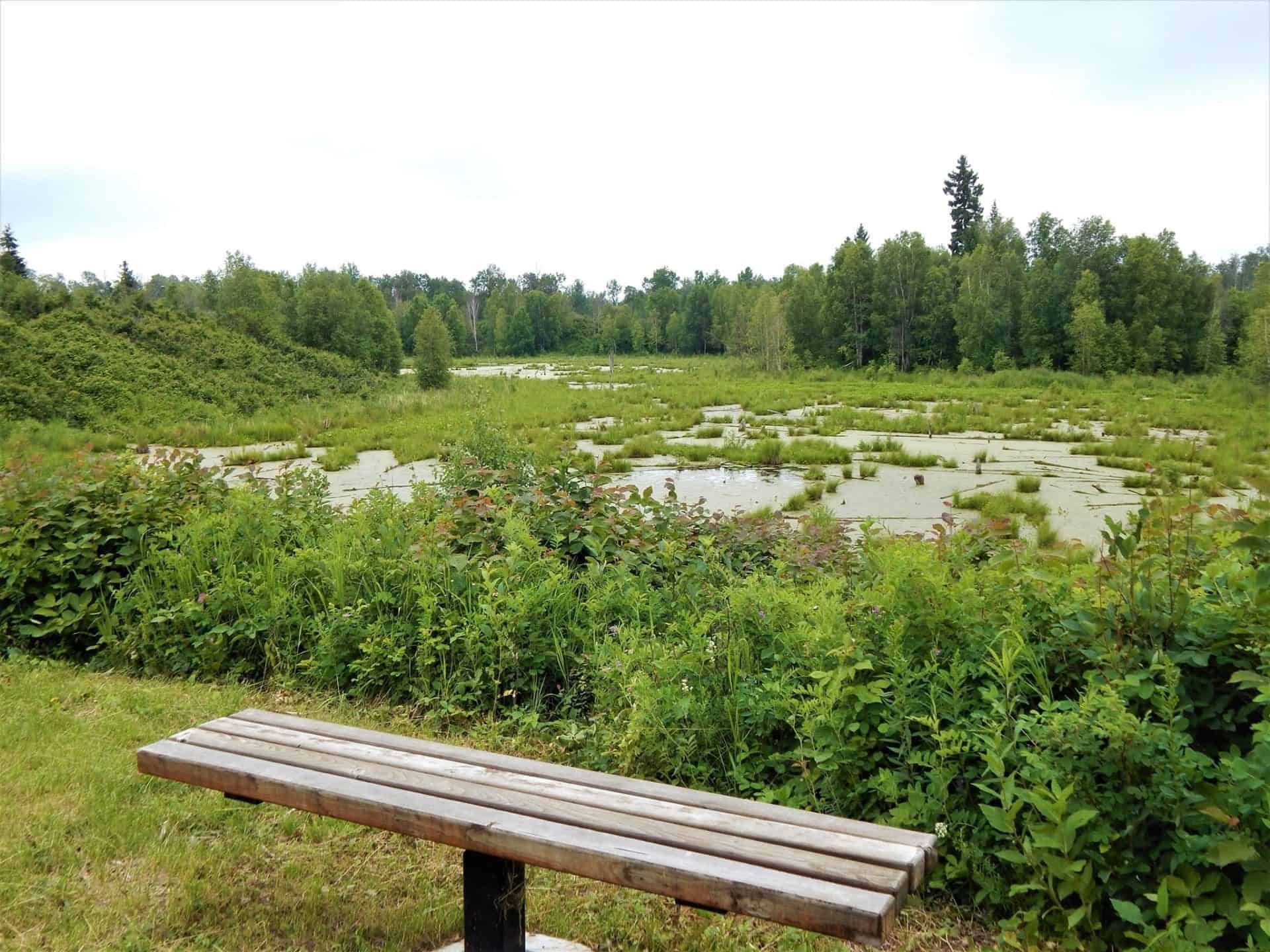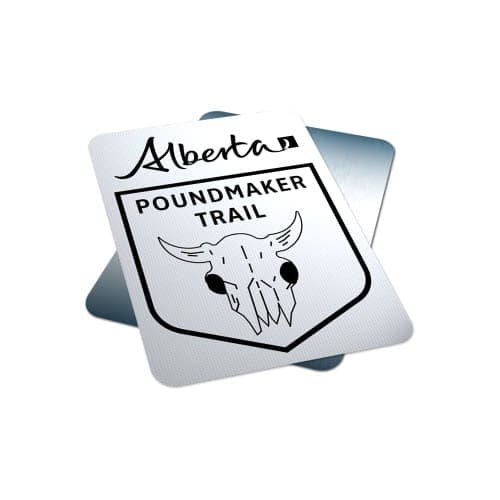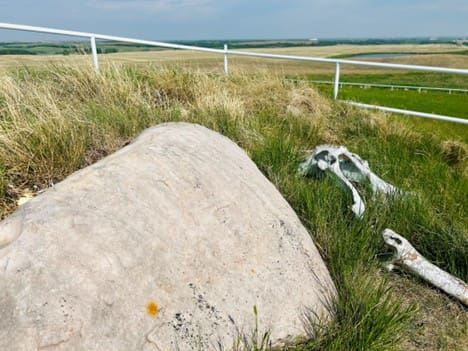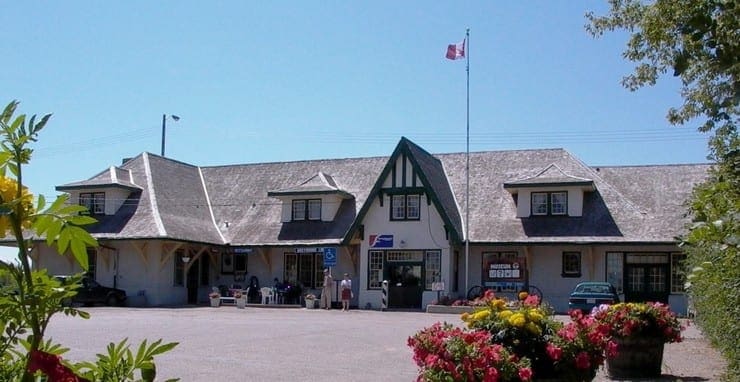Featured above: Artwork by Ellie Lagrandeur, Dreamcatchers Gift & Art Gallery in Fort Saskatchewan
East of Edmonton INDIGENOUS EXPERIENCES
Traveling east of Edmonton on Highway 16 you can learn about Indigenous culture and the early history of Alberta’s first people.
As you drive East of Edmonton you are entering into the Beaver Hills Biosphere, a traditional gathering place for Indigenous peoples from many nations. The Biosphere features an Indigenous speaker series as well as other activities that that promote living and working in harmony with nature to inspire a positive future in the Beaver Hills region.
The first stop takes you to downtown Fort Saskatchewan to experience indigenous works of art. Dreamcatchers Gift & Art Gallery is an Indigenous family-owned business showcasing local art & gifts, as well as an art rental from their gallery.

Featured Artwork by Ellie Lagrandeur, Dreamcatchers Gift & Art Gallery in Fort Saskatchewan
While observing the Bison at Elk island National park is a must see activity, you can also book a Discovery Tour with a Metis guide from Talking Rock Tours. The adventure begins at the Moss Lake Trailhead and winds its way through rolling sand hills, terraced beaver dams and native grassland habitat. Learn what our first peoples saw during their stays hunting for bison. At Elk Island National Park you can also experience a number of interpretive programs by Park staff that highlight the Bison and Indigenous Culture.
Showcasing local Indigenous art, drop into Baba’s Bistro on mainstreet in Mundare. It’s also a favorite stop for specialty coffee, baked goods and homemade meals.
For a great viewpoint located east of Vegreville on Highway 16, you will find Akasu in the County of Minburn. Akasu is an age-old historical site, encompassing both Akasu Lake and Akasu Hill. The Hill was a rest stop for native tribes, as they traveled through the area. Akasu is the Cree Indian word meaning “sick”. It is believed the name originates from natives who got sick drinking the water from the lake and the hill was where they came to perish. Akasu (Sickman Hill) is the highest geodetic elevation between Edmonton and Winnipeg, Manitoba.
Further down the highway is Canada’s only provincial border town, Lloydminster, where you will find the Gold Horse Casino. The Gold Horse Casino is owned by the Saskatchewan Indian Gaming Authority (SIGA), which operates distinctive First Nations gaming destination resorts that reflect the traditional aspects of First Nations culture and hospitality, with one hundred percent of the profits invested back into Indigenous communities. Check out your favourite slots, popular live games, and electronic table games. There is a bar and grill for refreshments. Entertainment schedule is found at www.goldhorsecasino.ca.
Southeast of Edmonton INDIGENOUS EXPERIENCES
Did you know…travelling southeast of Edmonton on Hwy. 14 you are on The Poundmaker Trail? The highway is named after Pitikwahanapiwiyin (c. 1842–July 4, 1886), commonly known as Poundmaker, a Plains Cree chief known as a peacemaker and defender of his people. During his lifetime he led his Cree band in search of buffalo over the vast territory which stretched from the Battlefords in Saskatchewan west into Alberta toward Edmonton.
Travel less than an hour from Edmonton along Hwy. 14 to reach the Tofield Museum to learn about early native settlement in the area. The museum also provides exhibits depicting the coming of European and American settlers and subsequent agricultural and business developments.
Follow Highway 14 for approximately forty-five minutes to the Viking Ribstones. The Ribstones, also known as Boulder Petroglyphs, are two large stones carved in the shape of an animal’s rib cage. These ancient monuments have remained in place just a few kilometres from Viking for thousands of years. Historically, the native people of the plains were dependent on the buffalo. They revered the spirit of Old Man Buffalo, expressing their prayers and gratitude at the Ribstone shrines. The Ribstones are located on the top of a hill, where you will be able to see for miles around.
Further east you can learn about early Indigenous History at Wainwright. For thousands of years, the Indigenous people moved through the Wainwright area following the bison herds. The land was the traditional home of the Cree and Blackfoot, with the Metis coming to the area later after Europeans had settled through much of the Canadian West. From Highway 14, follow 10th street till you reach the Train station, the home of the Wainwright Museum and Visitor centre. The museum not only showcases the local history but has a featured collection on the Bison and the former Buffalo National Park and its significance to the community.
Take a journey through Battle River Country along Highway 13 for more Indigenous history and experiences.
Follow Highway 13, then south on Hwy. 856 and you will locate Big Knife Provincial Park. It is a scenic provincial park in east central Alberta, and was established in 1962 on the Battle River. According to tradition, Big Knife Creek’s name commemorates a battle between two Indigenous Canadians, namely Big Man and Knife.
If you go even further southeast down on Highway 13, located in the Provost area of East Central Alberta, the Bodo Archaeological Site and Centre is a large and rich complex of archaeological resources that date back as early as 5000 years ago. Nearby, Sounding Lake was the site of the Treaty 6 adhesion in 1879. This is the ancestral and traditional territory of the Cree, Blackfoot, Dene, Salteaux, Nakota Sioux, Métis, and many other diverse Indigenous peoples whose histories, languages and cultures continue to enrich our communities. The Bodo Archaeological Society runs interpretive programming and tours at the centre which showcase fascinating archaeological sites unique to indigenous bison hunting camps which creates awareness and appreciation of the Indigenous Culture in Alberta.
Discover more Indigenous Experiences Northeast of Edmonton

